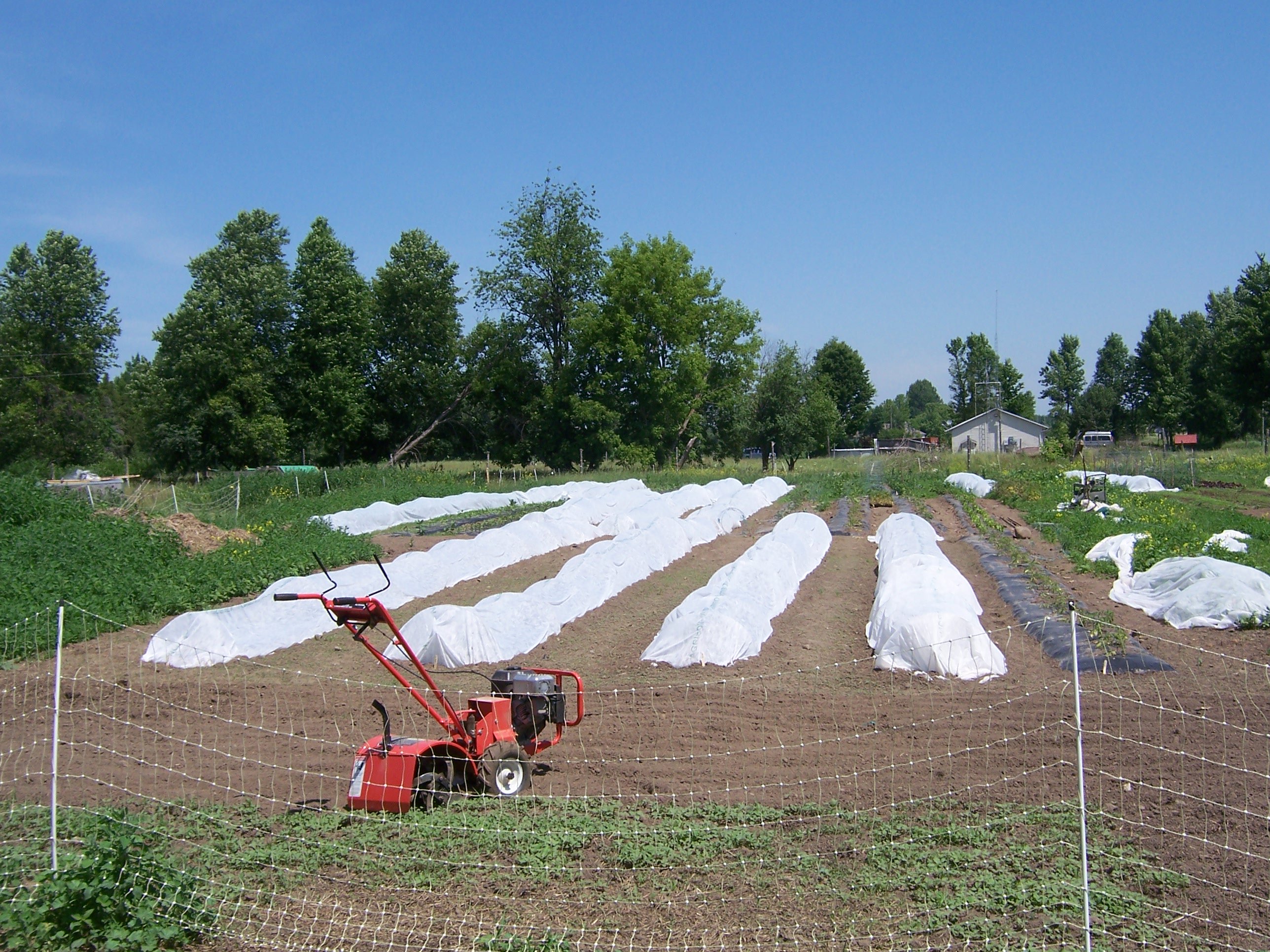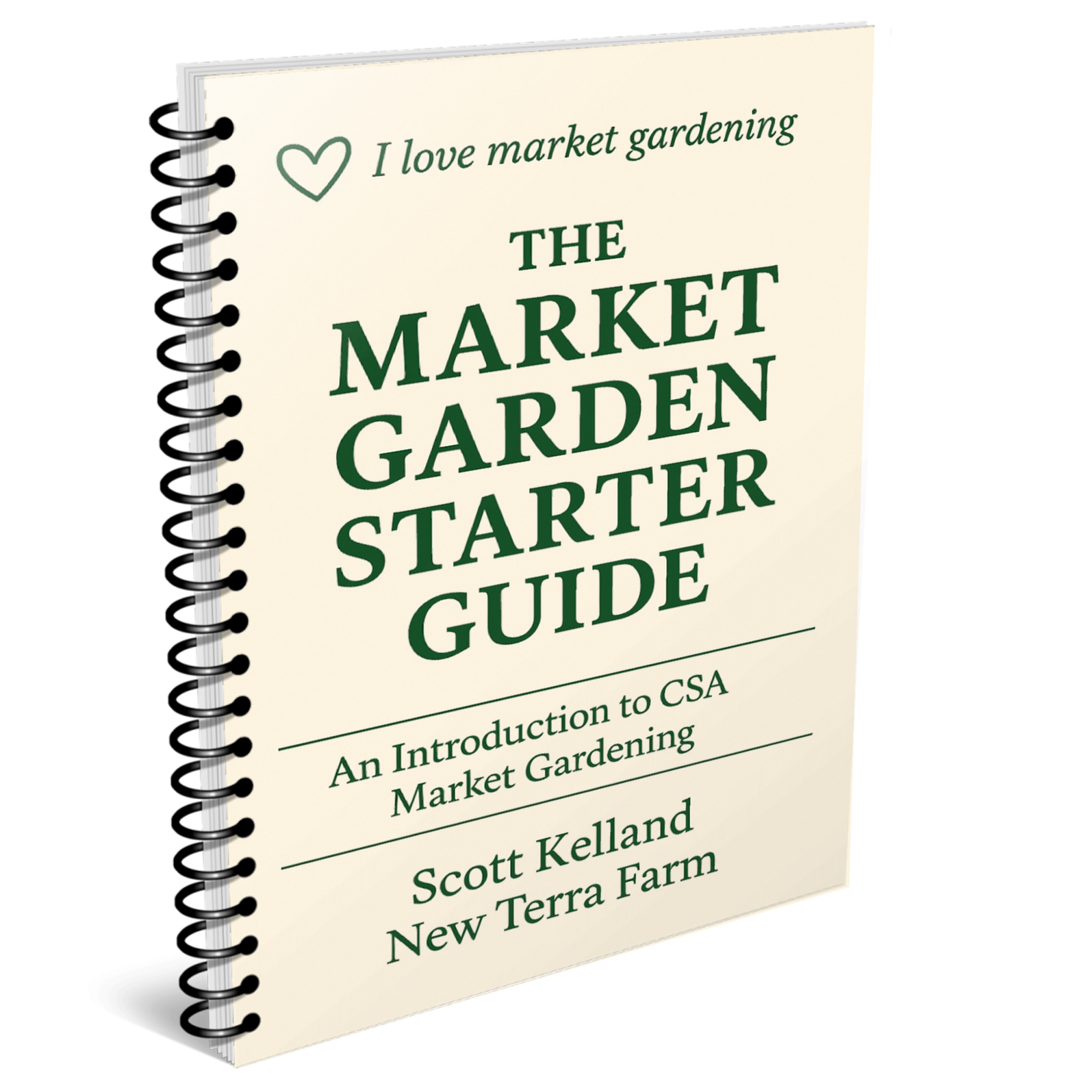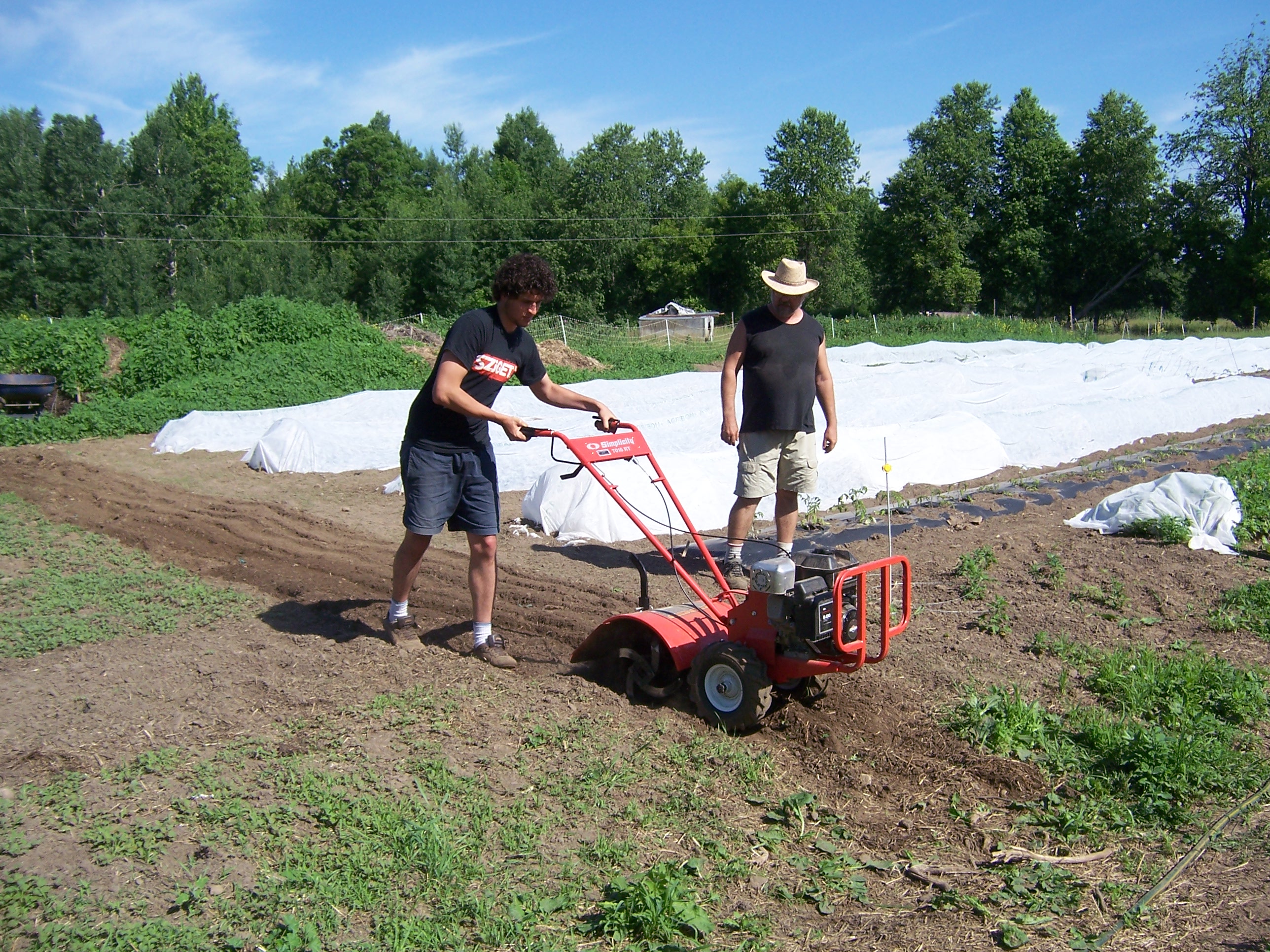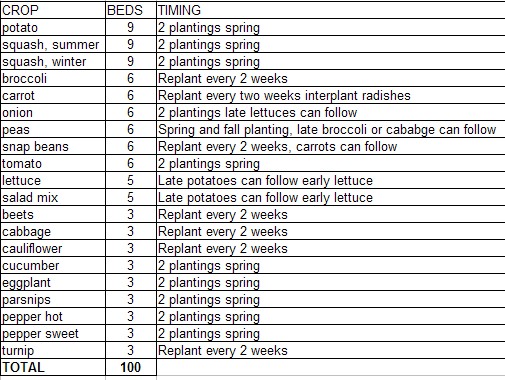A raised bed garden plan for the small market gardener Raised bed garden plan layed out in 50-ft rows Raised bed garden plan layed out in 50-ft rowsI use raised beds in my market garden to provide early soil warming and to protect against flooding. Here's a raised bed garden plan that can be adapted to grow a variety of crops. First, the New Terra Farm sunny garden. This is my main season garden, and as the name suggests it gets full sun. This site is about half an acre (approximately 100' x 200') I plan this garden in 50-foot sections; note that you could further subdivide each section into two 25-foot or three 16-foot beds, if that suits your plans. We chose this size partly for ease of movement around the garden (you only have to walk a maximum of 25 feet to find a cross path), and partly because we use a lot of 50-foot soaker hose for irrigation. Having a consistent size of beds makes crop planning easier,
too. I know how many of each crop will fit in my beds; if I need to
plant 200 cabbages and I know that 100 will fit in a bed, then I can
calculate how many beds I will need.
The picture below is me doing a little 'practice teaching' to a farm intern. Love watching other people work ;-) Free Market Garden Start-up Guide The consumer demand for fresh local organic food has never been higher. Bad news on the supply chain is good news for local growers. Get my free Organic Market Gardener Start-up Guide and see if this is the right time to launch your CSA market garden business. Enter your best email and the Guide will be sent to you right away.  I love work, I could watch it all day! I love work, I could watch it all day!A raised bed garden plan for a 5,000 sq ft gardenMy current gardens total just over an acre, and have more than 200 beds that are each about 150 square feet in size. But if you have a smaller area to work with, here's a raised bed garden plan that will work for a big home garden or a small commercial garden.
 Raised bed garden plan and schedule Raised bed garden plan and scheduleThe table above is based on 1) the popularity of various garden vegetables; 2) the space required to grow each crop; and 3) the timing to start and replant each crop to sustain a harvest over an entire season.
Resources for the Small Grower and HomesteaderChapter 9 - Seven Cash Cow Crops: The Self-Sufficient Backyard Raise chickens, pigs and a productive organic garden: The Homesteader Book Bundle Fresh egg for breakfast (and maybe barter): The Eggs Factory If you need to build it, the plans are here: 16,000 Woodworking Plans Here's my curated list of micro-farm equipment for the small grower Check out some great products for farmers and gardeners here farm grown reviews This is a pretty good article about Urban Survival. You might also want to up your survival game with my Homestead Book Bundle
|
See Something You Like? Share!
Got questions to ask, stories to tell?
Share your organic market gardening question, or comment, or story.
Recent Articles
-
Farm grown reviews of products recommended by New Terra Farm
Dec 04, 25 06:26 AM
Find great farm and garden products in my farm grown reviews -
Best Chicken Coop and Accessories for Small Farms and Homesteads
Nov 30, 25 09:18 AM
Looking for the best chicken coop? Here are the top coops, accessories, nest boxes, and gear to build a safe, productive poultry setup. -
Community Supported Agriculture Marketing Ideas To Sell Out The Season
Nov 05, 25 05:18 AM
Authentic Community Supported Agriculture marketing ideas to grow loyalty, boost sign-ups, and sell out your CSA every year




